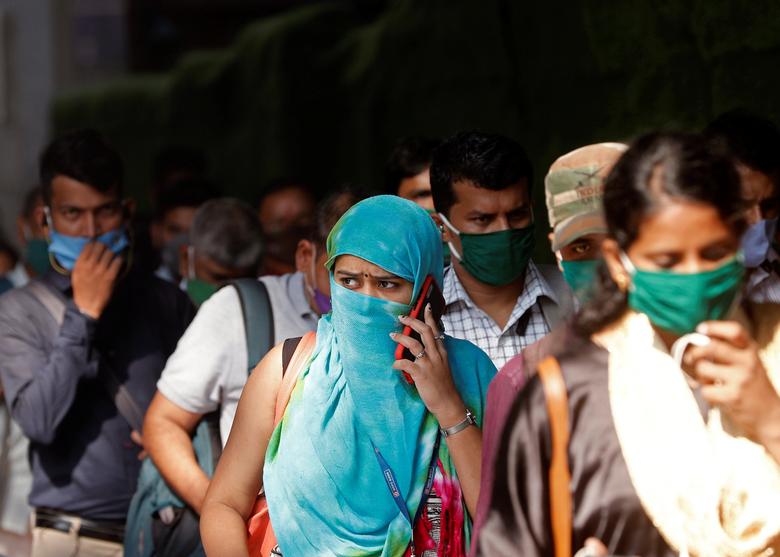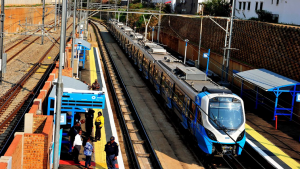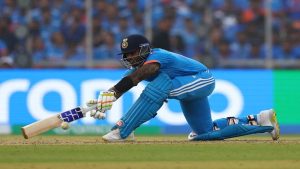The United States is deeply concerned by a massive surge in coronavirus cases in India and will race additional support to the Indian government and health care workers, a White House spokeswoman said on Saturday.
“We are in active conversations at high levels and plan to quickly deploy additional support to the Government of India and Indian health care workers as they battle this latest severe outbreak. We will have more to share very soon,” the spokeswoman told Reuters via email.
Washington is under increasing pressure to do more to help India, the world’s largest democracy and a strategic ally in President Joe Biden’s efforts to counter China, as it grapples with a record-setting surge in coronavirus infections.
The Indian government has deployed military planes and trains to get urgently needed oxygen to Delhi from other parts of the country and foreign countries, including Singapore.
The number of cases across the country surged by a record daily rise of 349 691 on Sunday, for a total of 16.96 million cases, including 192 311 deaths, the health ministry said.
The country of 1.3 billion people is on the brink of a humanitarian catastrophe, Ashish Jha, Dean of the Brown University School of Public Health, warned in an op-ed published on Saturday in the Washington Post.
He said some 2 000 people were dying daily, but most experts estimated that the true number was five to 10 times that level.
Officials from both countries are engaged at various levels to ensure “a small supply of inputs and components from US companies for the production of COVID-19 vaccines in India,” a spokesman at the Indian Embassy in Washington told Reuters.
He said it was important to work together to identify ways to overcome bottlenecks in medical supply chains and expedite ongoing vaccination efforts.
Jha called on Washington to send India oxygen, excess testing kits and high-quality personal protective equipment, including face masks, and medicines to treat COVID-19 patients, including sedatives and Remdesivir.
Jha also urged the Biden administration to share excess vaccines with India and other countries in crisis, noting that the United States had an estimated 30 million unused doses of the AstraZeneca vaccine that is in use elsewhere, but has not been authorized by US regulators.
Washington should also lift export controls on raw materials put in place via the Defense Production Act and an associated export embargo in February, Jha wrote.
White House Press Secretary Jen Psaki on Friday said US and Indian officials were working to find ways to help address the crisis, but gave no timetable for the support.
She said the United States has already provided India some $1.4 billion in health assistance, emergency relief supplies, pandemic training for Indian state and local health officials, and ventilators.
Hospitals in India overwhelmed as new COVID-19 cases rise:
Many people in the country are now dying, not only because they have COVID-19, but because they are unable to access basic medical care.
In New Delhi, the country’s capital which is home to 20 million residents, most hospitals have run out of beds, essential supplies, and oxygen as well. This time around, many more people complaining of severe infections that need them to be given oxygen supplies, but what has happened is that the surge has been so massive that most hospitals are now operating with dwindling supplies.
In the last two days, the country has seen at least 40 people die in New Delhi because oxygen supplies at those hospitals were dangerously low. At least a dozen hospitals have sent Save Our Souls (SOS) messages to the central government, asking them to send more supplies urgently.
Because of this shortage, many hospitals are no longer taking COVID-19 patients, leading to overly dramatic scenes outside Delhi hospitals.
“You have people who are sitting on gurneys, inside ambulances, many inside their cars or even on the footpaths, holding onto portable oxygen cylinders hoping they will get admission before their supplies run out,” says SABC News Correspondent, Neha Poonia.
The country’s Health Minister, Doctor Harsh Vardhan, says that the government has now set up a control room, in a bid to ensure that there is a seamless supply of oxygen to regions that need it.
The Indian air force has been pressed into service, the Indian railway network – an extensive route of trains – is also transporting oxygen to interior regions. But criticism is mounting about how Prime Minister Modi’s government has handled the crisis.
On Saturday, Modi waived off import duties on oxygen and other essential medical equipment, indicating that India might be looking at airlifting these critical supplies from other countries.
But experts are pointing out that this current deadly second wave of infections is likely to the only peak around mid-May, which means that as the days progress, the pressure on India’s already stretched healthcare resources will only increase.






